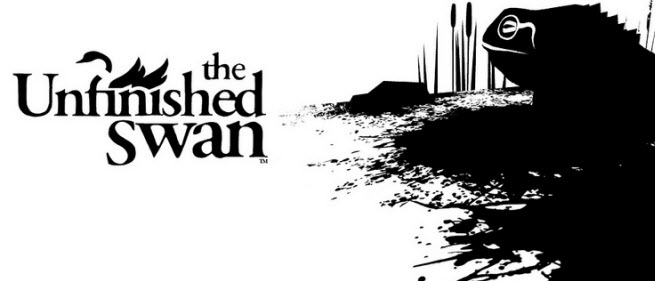Warning: This interview has spoilers.
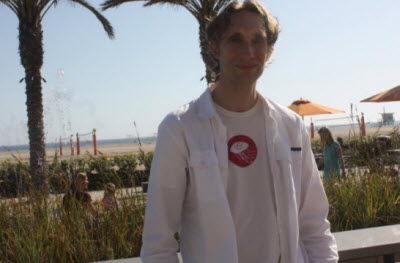 The story and its ending have stirred a lot discussion among players, who are offering different interpretations of what the game means. We caught up with Ian Dallas, the creative director, to talk about the genesis of this unusual game and its mysteries.
The story and its ending have stirred a lot discussion among players, who are offering different interpretations of what the game means. We caught up with Ian Dallas, the creative director, to talk about the genesis of this unusual game and its mysteries.GamesBeat: The ending seemed to confuse the critics. Is it intentionally open to interpretation?
Ian Dallas: It didn’t feel like it was especially open-ended. For me, I have an idea of the way things work. It’s not a dream. There’s a door. He walks into it. It’s a world that exists on its own. But I don’t think that if someone feels like, “Oh, it’s all a dream,” they’re necessarily wrong, either. It’s a stew of a bunch of different related thematic elements, so I think it is open to some interpretation. But I wouldn’t say that I created it deliberately to confuse people or leave things open-ended.
I preferred to keep the story fairly minimal, for different reasons. It’s a minimalist game overall. Any time you do that, like in the drawings of Shel Silverstein, there are areas of the canvas that are white. As an artist, you might have an idea about what’s there, but part of the appeal of that is that players are free to inject their own ideas about that space to make it a more personal experience for themselves.
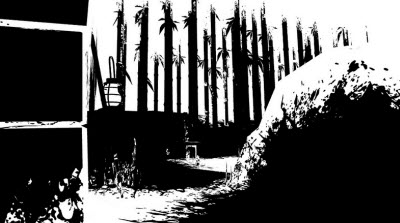 GamesBeat: If you want to play with this a little bit. … What does this ending mean, then? Who is the queen? Who is the king? Who is the swan?
GamesBeat: If you want to play with this a little bit. … What does this ending mean, then? Who is the queen? Who is the king? Who is the swan?
Dallas: The literal interpretation is that the queen is Monroe’s mother, which is fairly clear, I think. It’s the exact same drawing, more or less, of the mother in the very beginning of the story and then when you see the king’s wife later on. Perhaps a few hours separate that if you’re playing through the game in one shot, so I would certainly forgive players who didn’t pick up on that the first time.
The idea is that the king created this woman, his queen, when he was looking to start a family. Ultimately, the queen leaves. She’s pregnant, and she somehow makes her way to the real world, where she has Monroe. And then Monroe is born and makes his way back. It’s still not clear why this swan decides to jump out of a painting and lead Monroe back to his father, but I think it’s kind of a shorthand for the forces that inevitably bring people closer together.
One thing that is deliberately unclear — I don’t think I know the answer to this — is whether or not the king and Monroe understand that the king is Monroe’s father. It’s fine either way — if the king knows that or doesn’t. It doesn’t change anything dramatically. But, definitively, Monroe is the king’s son.
GamesBeat: One of the interesting interpretations I read is that it’s a story about a father and his estranged son. The father is a creator. He takes pride in his work, and he wants his son to follow what he does more exactly. The son doesn’t do that, and so he has to deal with the fact that his legacy is not going to be continued by his son. Monroe’s style of art is going to be different from the king’s. I guess the question that’s open-ended is whether the king is ultimately okay with that. That was something that somebody else put out there. It didn’t occur to me that it might be what the story is about. Is that anywhere near your mark?
Dallas: Yeah. For me, the genesis of this relationship is a scene in the Iliad, when Hector comes back to Troy and has this dialogue with his son. I think it’s quoted word for word in one of the king’s lines of dialogue. Hector wishes that his son will ultimately be a better person than he is. He hopes that his son will have a great future, although you know as a listener in the Iliad that things do not go well at all for Troy. None of these things are going to happen, and it’s nobody’s fault. It’s just the way of things. Broadly, the king’s story is that he’s an artist, and he wishes that the things that he creates would last forever. He’s going to have to come to terms with the fact that they won’t last forever. Even in a magical kingdom, these things fall apart.
GamesBeat: And not only that, it’s his son who messes them up.
Dallas: It’s a bit frustrating when you see the generation after you making a lot of the same mistakes and undoing your work. But I think it’s Plato who says that children are what is deathless in things that die. The only thing that actually is permanent is the ability to leave children to come after you. Although in the short-term, the irony is that children end up undermining the work that you’ve done. Even if it’s as simple as you go and buy a nice rug, and they spill grape juice on it. But in the bigger view, they’re the one thing you can create that has a chance to consistently outlive you. You just cede control. … If you’re making a painting, you can decide what it’s going to be. If you’re making a child, it’s a much coarser brush you’re working with.
GamesBeat: A lot of this didn’t occur to me. I did wonder why some of the actions related to the queen. … Why did she leave the king at the last minute, before their son was born? Was she frustrated with him?
Dallas: That’s one of the things that isn’t really specified in the game, but not for any good reason other than it’s not the focus. We didn’t get into the details of why the queen leaves because ultimately, it doesn’t really matter for Monroe. The important thing is that she’s gone. When a child has divorced parents, the details aren’t as important to them as the overwhelming fact that their parents aren’t there anymore.
For me personally, it’s an open-and-shut case of. … The king is hard to live with. He’s not a very nice king. I don’t think that he would be a very nice husband. There are some storybook pages hinting at that, with the king trying to impress his wife by spending all of his time creating elaborate gifts for her. It’s really just the king being selfish. His story is about being incredibly self-absorbed. He feels like making gifts is going to be something that makes the queen happy, but in reality, it’s what makes him happy. He’s an artist who likes creating things. The queen ultimately sees what life would be like raising a child alongside someone who is that self-absorbed, so she opts for a different path.
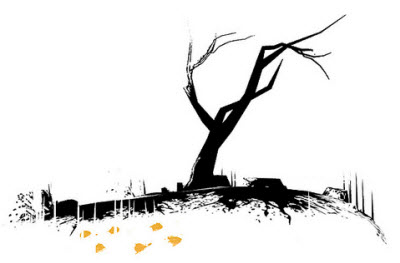 GamesBeat: There’s almost no satisfaction for Monroe as far as reconnecting with his mother. That seems to be something that’s lost and that he has to become accustomed to.
GamesBeat: There’s almost no satisfaction for Monroe as far as reconnecting with his mother. That seems to be something that’s lost and that he has to become accustomed to.
Dallas: The reconciliation that the game offers in the end is that Monroe is following in his mother’s footsteps. His mother creates all these paintings of animals, although she never finishes them. At the very end of the game, Monroe paints his first painting of the swan and finishes it. He’s carrying the torch — in this case almost a literal torch, this magic paintbrush. He starts with his mother’s magic paintbrush, and he ends up with his father’s magic paintbrush. It’s not like he’s never going to meet his mother again, but he’s carrying on with the work that both his mother and father did.
GamesBeat: The story itself — is any of this very personal to you? Do you have any more personal stake in the different events that transpire in the story?
Dallas: I didn’t when the game started. It was just something that. … As a child, I’d always been very concerned that my parents would die. It seemed like the worst thing that could possibly happen. One reason that Time Bandits resonated with me as a young person and still disturbs me when I see it now. … At the end of Time Bandits, his parents just suddenly die. There’s no reason for it. It just happens. I think that’s pretty true to the way that the world works.
As a child, you have so little control. If you look at all the classic fairy tales, they’re about kids in unfortunate situations through no fault of their own. Being a child — or at least this is my memory of it — you’re beset by all kinds of forces that you don’t understand and that are much more powerful than you.
I guess it’s a long-winded way of saying that I centered the story on a boy whose mother has died because for me, that had always been something that resonated strongly. It was a concern that I had as a child, and it seemed like an interesting place to start for an emotional journey. There’s nothing sadder to me than a child losing his parents.
The weird, personal twist on all this is that halfway through development, my own mother was diagnosed with a terminal illness, although she’s still alive. So that gave me more of a personal perspective on the whole thing. As tragic as it is, I’m also a 34-year-old man now. At some point, your parents are going to die. Nobody is going to live forever. I’m really just thankful [for] the time that I had with her, and I’m glad that she was able to raise a child through to adulthood. I can’t imagine how horrible it would have been to not have had all those years.
GamesBeat: There were a couple of other things I was curious about. … You ran the credits within the game itself, before it was actually over. I haven’t seen that before.
Dallas: Initially, it came out of being very focused on the last image of the game. It’s a game about unfinished things, and we felt like when players finished the game, we wanted to have a strong sense of closure to it. Visualizing where the story wraps up, and then you get five minutes of credits and music. … It just wouldn’t have been a very satisfying, clean ending like we wanted.
Going back to the storybook, you can finish a book and then close it. There’s that moment where you’re still on this high of finishing something. All these ideas are whirling around, and then suddenly, the source of stimulus is completely silent. That’s a fantastic moment to reflect. It gives you a chance to think about what you’ve just seen. It’s like at the end of a meal, when you get this lull between when the meal is over and the check arrives. It’s one of the most satisfying moments — when you can look around and remember what you’ve done. We put the credits inside the game so we could end the game on something very sharp, and then we’re out.
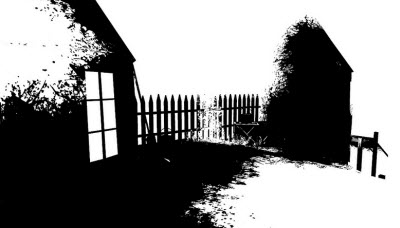 GamesBeat: I was also curious about the pacing of the last chapter. It speeds up, and the narration almost takes over in revealing the story, whereas before it seemed like the pace was more gradual. Everything picked up at the end. I wondered if there were points during that ending where you had a choice whether to express it as narration or make it happen in the game.
GamesBeat: I was also curious about the pacing of the last chapter. It speeds up, and the narration almost takes over in revealing the story, whereas before it seemed like the pace was more gradual. Everything picked up at the end. I wondered if there were points during that ending where you had a choice whether to express it as narration or make it happen in the game.
Dallas: The ending was a very interesting sequence in production. It came very late in development. The last quarter of the game or so was on the chopping block for a very long time. My memory of that period is kind of a blur because it was something I very strongly felt needed to be in the game. But at the same time, the programmers and artists were very concerned that we were taking on too much work and that it would cause problems with the rest of the game. We wouldn’t be able to bring things up to a level of polish that we would be happy with.
A lot of the choices were made, to some extent, for expediency’s sake. We tried to reuse as much as we could from the technology and environments that we had while [at] the same time telling the story that we felt needed to be there at the end. There was a point with something like an Escher room, where you’re walking on the ceiling. Everyone loved it, but it was too much new technology right at the end. It could have broken everything. So we scaled things back and went a little simpler.
When we were able to capture Terry Gilliam, that also changed things a bit. He does a fantastic job of inhabiting this character. There were areas of the game that we were concerned about before, where it might just feel like you were walking along and not a lot was happening. They were really dead when we had our temp actors in. But as soon as we had Terry Gilliam, it came alive. It had this really nice sense of character.
More than anything, we wanted the end of that to feel like the end of the world. Things are getting faster and bigger and crazier, culminating in this final scene with the king’s funeral and afterward. We wanted it to be shorter and faster and bigger than anything that had come before, so it felt like there was a real sense of closure to that sequence.
VentureBeat's mission is to be a digital town square for technical decision-makers to gain knowledge about transformative enterprise technology and transact. Learn More
